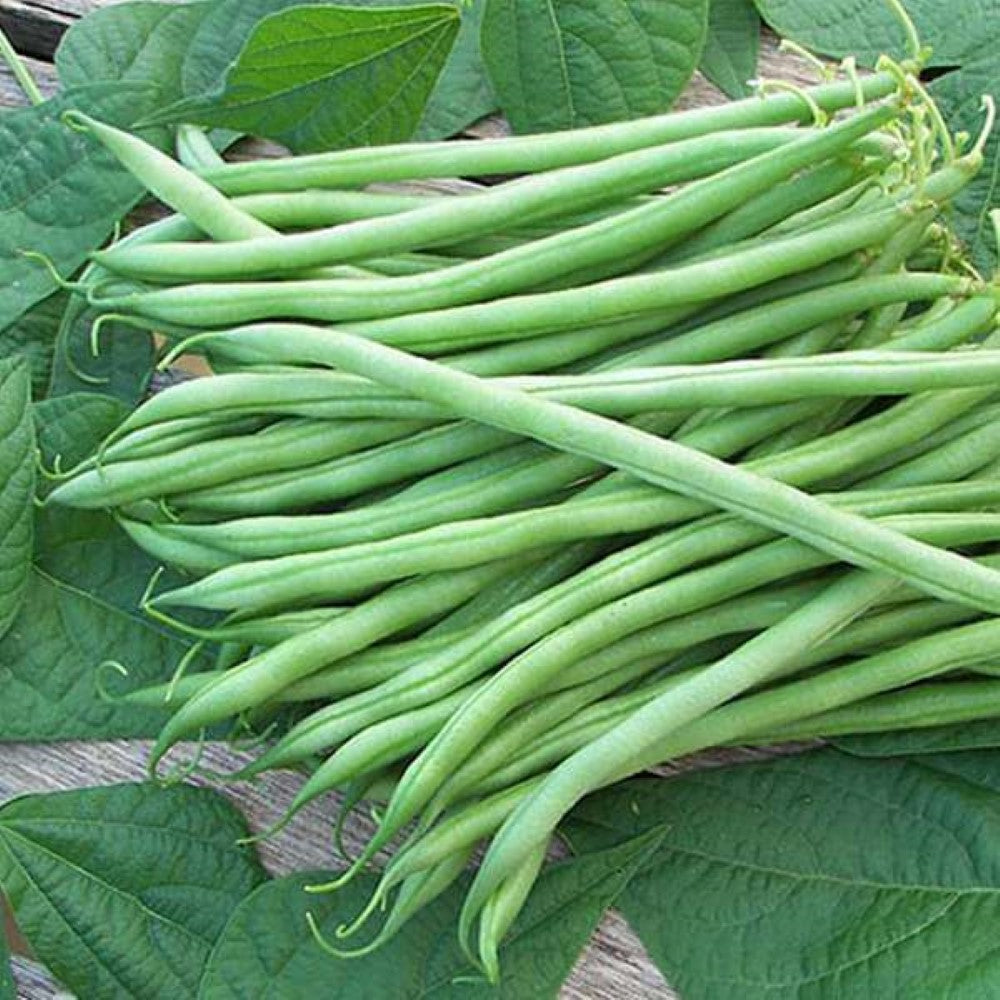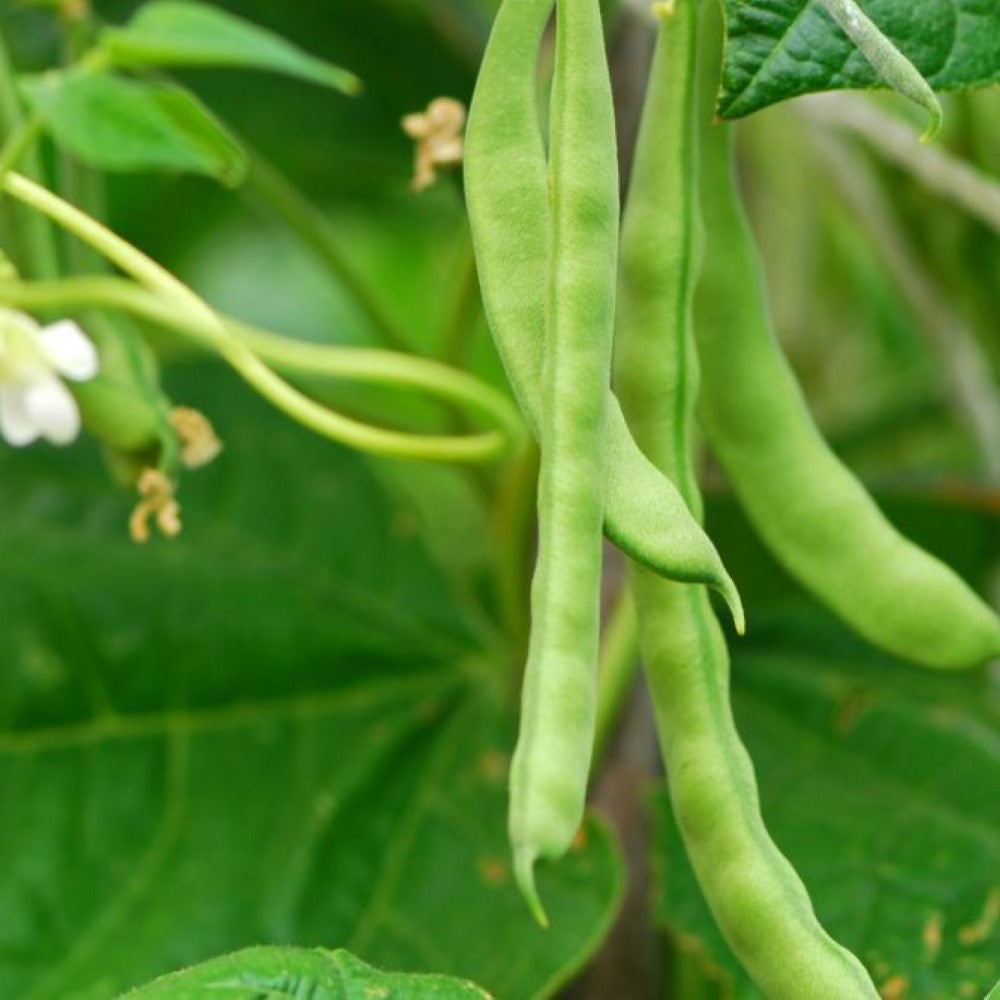

Product Details
Description
� Bush Beans: Key Characteristics
Bush bean, scientifically known as Phaseolus vulgaris, is a widely popular bush bean variety celebrated for its high yield, disease resistance, and flavorful pods. This cultivar is a staple in home gardens and commercial farms due to its reliability and ease of cultivation.
� Origin, Growing Conditions, and Optimal Habitat For Bush Beans
Bush bean is a cultivar of the common bean species Phaseolus vulgaris, which is native to Central and South America. This variety is well-suited to a range of growing conditions and is known for its adaptability and productivity. Here are the key parameters for its cultivation:
| Parameter | Details |
|---|---|
| Family | Fabaceae |
| Growth Habit | Bushy annual |
| Height | 18 to 24 inches |
| Lifespan | Annual |
| Hardiness Zones | USDA Zones 3 to 9 |
| Temperature (F) | Warm temperatures (70-85°F ideal) |
| Soil pH Range | Slightly acidic to neutral (6.0-7.0) |
| Sun Exposure | Full Sun |
| Watering Needs | Moderate watering, well-drained soil |
| Pruning Requirements | None |
| Flowering Season | Early to mid-summer |
| Fruit Color | Green |
| Propagation Methods | Direct sowing of seeds |
| Pests and Diseases | Resistant to common bean diseases |
✨Care and Maintenance of Bush Beans
The Bush Beans is relatively low-maintenance once established. Proper care ensures healthy growth and abundant flowering. Here are some essential care tips: and an answer to the question: How to Grow a Bush Bean?
Planting: Choose a site with acidic, well-drained soil and partial shade to full sun exposure. Dig a hole twice as wide and deep as the root ball and amend the soil with organic matter.
Watering: Provide regular watering, especially during dry spells, to keep the soil consistently moist but not waterlogged.
Fertilization: Apply a balanced, slow-release fertilizer formulated for acid-loving plants in early spring. Avoid excessive fertilization, as it may lead to excessive foliage growth at the expense of flowering.
Mulching: Mulch around the base of the plant to conserve soil moisture, suppress weeds, and maintain a more consistent soil temperature.
Pruning: Minimal pruning is required, primarily for shaping and removing dead or diseased branches. Prune after flowering to avoid cutting off next year's flower buds.
By following these care and maintenance guidelines, you can ensure your Hybrid Okra remains healthy, productive, and a beautiful addition to your garden or orchard for years to come.
�Searching for 'Where Does Beans Grow' or 'Bush Beans?'
Looking to enhance your garden with the exquisite beauty of Bush Beans? Explore a wide selection of evergreen shrubs for sale at Pixies Gardens. Whether you're a seasoned gardener or a beginner, the Bush Beans is sure to add a splash of color and fragrance to your outdoor space.
At Pixies Gardens, we pride ourselves on providing top-notch customer service and expert advice to help you select the perfect tree for your needs. Whether you're a seasoned gardener or just starting, our team is here to assist you every step of the way.
Average USDA Growing Zones

� Frequently Asked Questions (FAQs)
-
How tall does Bush Bean grow?
Provider bush bean typically reaches a height of 18 to 24 inches, forming a compact and bushy habit ideal for small garden spaces or container cultivation.
-
When does Bush Bean produce fruit?
Provider bush bean typically bears fruit in early to mid-summer, with green pods ready for harvest about 50-55 days after planting.
-
Is Bush Bean prone to pests and diseases?
While generally resistant to common bean diseases such as rust and mosaic virus, Provider bush bean may still encounter pests like aphids, bean beetles, and spider mites. Regular monitoring and proper cultural practices can help prevent and manage these potential challenges, ensuring the health and productivity of your bean plants.
Customer Service
Pixies Gardens
2024 Mcdaniel Mill Road Conyers GA 30094
Email: cs@pixiesgardens.com




